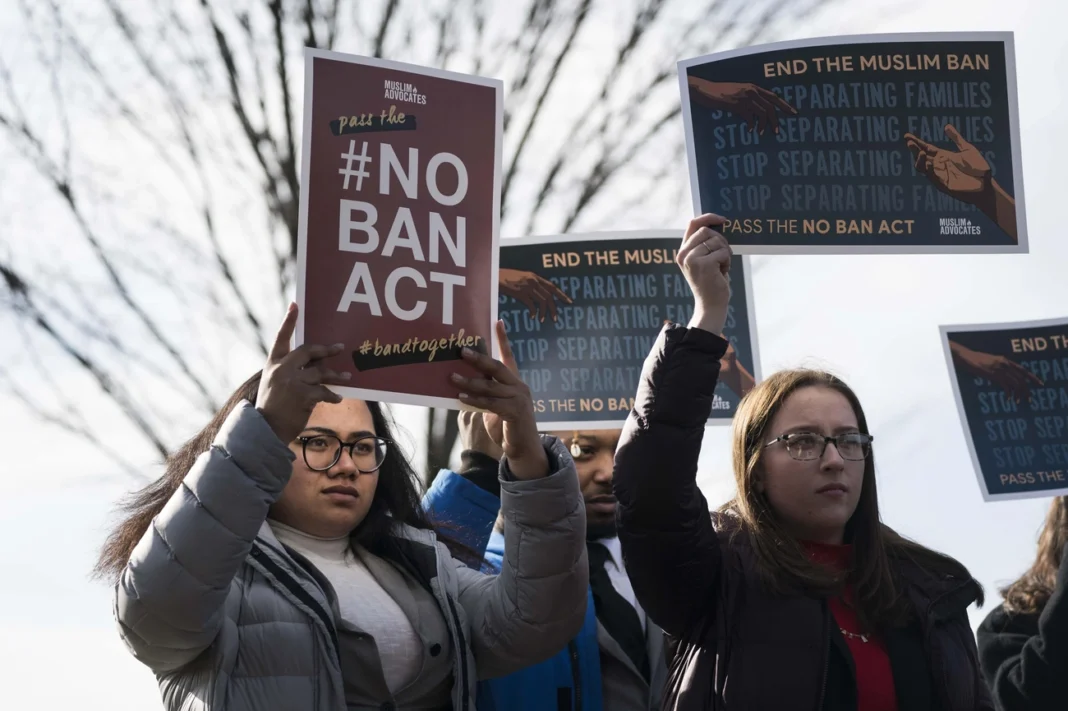The Trump administration plans to substantially expand its travel restrictions and may ban travelers from 36 more countries. This sweeping change would hit Africa the hardest, as 25 of these nations are located on the African continent.
The new rules would make Africa the most restricted region for US travel. This proposal aligns with Trump’s broader immigration crackdown that began at the start of his second term. Secretary of State Marco Rubio’s June 14 memorandum has given these governments just 60 days to meet the Department of State’s standards. The citizens of nearly two-thirds of African nations could face full or partial travel restrictions if their governments don’t address American security concerns. These nations must act quickly to alleviate security screening issues, create action plans, and track their progress before the deadline expires.
What Does the New Travel Ban Proposal Include?
Image Source: Statista
“The Trump administration has given 36 countries, most of them in Africa, a Wednesday deadline to commit to improve vetting of travelers or face a ban on their citizens visiting the United States.” — Associated Press, International news agency
The US government’s latest travel ban took effect on June 4, 2025. It blocks citizens from 12 countries from entering the United States. The list includes seven African nations: Chad, Congo-Brazzaville, Equatorial Guinea, Eritrea, Libya, Somalia and Sudan. Afghanistan, Myanmar, Haiti, Iran and Yemen round out the banned countries.
The administration also placed partial limits on people from seven more countries: Burundi, Sierra Leone, Togo, Cuba, Laos, Turkmenistan and Venezuela. Their citizens can’t get tourist, student, or immigrant visas. Some business travel stays allowed though.
The White House explained why each country made the list. Chad’s visa overstay rate hit an alarming 49.54%. Somalia earned its spot as a “terrorist safe haven” with a government that can’t control its territory. Other key factors included weak ID verification systems, high visa overstay numbers, and countries refusing their deported citizens.
Plans to expand these restrictions would change everything. The new proposal targets 36 more countries. Africa would feel the biggest hit with 25 nations on the list. Even major players like Nigeria and Egypt could face restrictions. This would make Africa the region with the most US travel bans worldwide.
Countries have until August to fix American concerns or face full or partial bans. A memo lists several problems they need to address. These range from poor ID systems to “widespread government fraud” and “antisemitic and anti-American activity”.
These restrictions could disrupt many lives. Last year alone, the State Department gave over 226,500 visas to citizens from the current 19 restricted countries. The rules don’t affect everyone though. Green card holders, current visa holders, diplomats, dual nationals using non-banned passports, and certain athletes can still travel.
How Did We Get Here? A Look at the Policy Timeline
Image Source: Al Jazeera
Trump’s January 2017 Executive Order 13769 marked the beginning of controversial travel restrictions. The order banned entry from seven Muslim-majority countries: Iran, Iraq, Libya, Somalia, Sudan, Syria, and Yemen. Chaos erupted at airports nationwide as officials detained hundreds of travelers and revoked over 60,000 visas temporarily. Federal judges blocked this measure within a week.
Trump released a revised order (Executive Order 13780) in March 2017. The new version dropped Iraq but kept restrictions on six other nations. Legal challenges persisted, which led to a third version in September 2017 (Presidential Proclamation 9645). This version added North Korea and Venezuela to the list while removing Sudan.
Trump’s administration issued four different travel bans during his first term. Each version aimed to withstand legal challenges. The Supreme Court ended up upholding the ban in June 2018 with a 5-4 decision. The court ruled it was “squarely within the scope of Presidential authority”.
Trump added six more countries to the restricted list in January 2020 before leaving office. Biden reversed these bans on his first day as president in 2021. He called them “morally wrong” and “designed to target primarily Black and Brown immigrants”.
Trump was quick to restart his immigration agenda after returning to office in 2025. He signed Executive Order 14161 on January 20 to strengthen vetting of foreign nationals. This policy concluded with a new proclamation by June 4 that restricted entry from 19 countries – the largest ban yet.
The administration now looks to expand the restrictions even further, potentially tripling the number of banned countries. This possible African travel ban shows how the administration continues to use executive power to limit immigration.
What Are the Broader Implications for African Immigrants?
Image Source: slate.com
“Thousands of other nationals—many of whom face conflict or hardship in their home countries—will be subject to the new ruling.” — Council on Foreign Relations, Independent, nonpartisan think tank specializing in U.S. foreign policy
The expanded travel ban severely disrupts African immigrants’ lives and their communities. Families face immediate separation when spouses and children cannot reunite with permanent US residents. People miss life-changing moments like weddings, births, and funerals of their loved ones.
American universities might become inaccessible to approximately 19,000 international students. Sudan leads African nations with 398 students currently in the US, while Libya follows with 365 students and Equatorial Guinea has 234 students. Partial restrictions also put 824 African students from Sierra Leone, Togo, and Burundi at risk.
Talented individuals must now look elsewhere because of economic barriers. One academic suggests that “Africa must respond by strengthening local higher education, enhancing regional partnerships, and building bridges of collaboration with alternative global powers”. Countries like China, India, and European nations could benefit as migration patterns evolve.
Refugees and asylum seekers face the harshest reality. Eight African countries experiencing humanitarian crises fall under the ban, including Cameroon, Ethiopia, and Somalia. Cameroon alone has 2.8 million people facing acute food insecurity. Limited legal options might force desperate migrants to take dangerous irregular routes.
The diplomatic fallout has begun quickly. Chad suspended visas for US citizens, showing how this policy damages relationships with key allies. Notwithstanding that, countries like Sierra Leone and Somalia show readiness to work with American authorities.
Muslim-majority nations bear the brunt of this policy, with nine of the twelve fully banned nations having Muslim majorities. Human rights advocates point out that the ban perpetuates a pattern of “targeting and terrorizing Black and Brown communities”. This raises questions about discrimination rather than genuine security concerns.
The Future of US-Africa Relations Hangs in the Balance
A pivotal moment shapes US-Africa relations as the Trump administration plans to expand travel restrictions. The continent faces an unprecedented diplomatic challenge. Twenty-five African countries might join the existing ban, which would make Africa the most restricted region for US travel worldwide. This would affect hundreds of thousands of visitors, students, and immigrants each year.
The earlier travel bans created immediate chaos at airports. Legal battles reached the Supreme Court amid significant international criticism. Notwithstanding that, the administration seems determined to implement even broader restrictions. Trump’s return to office marks a sharp reversal from Biden’s administration, which had ended the previous bans by calling them “morally wrong.”
African families will feel the heaviest impact of these policies. The restrictions keep spouses apart and stop parents from seeing their children. People can’t attend important life events. On top of that, thousands of African students might lose educational opportunities, which could push talent toward competing nations like China and European countries.
The humanitarian aspect raises troubling questions. Several countries under the ban face acute crises. Somalia and Chad’s populations struggle with food insecurity and violence. People seeking safety might take dangerous irregular migration routes when legal pathways close.
Early diplomatic responses hint at potential fallout. Chad has already suspended visas for US citizens as retaliation. Some affected nations show willingness to address American concerns, but the 60-day timeline puts immense pressure on countries with limited resources.
These policies show a troubling pattern. Muslim-majority countries and African nations face disproportionate targeting, which raises questions about the real security concerns behind these decisions. The expanded ban’s implementation would change America’s relationship with the African continent fundamentally. This could undermine decades of diplomatic work and push affected countries to seek alternative global partners.



